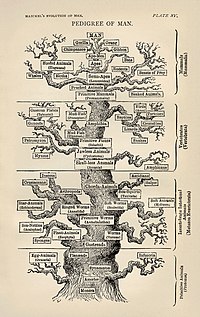
Photo from wikipedia
Personal identification through different biometry systems is being utilized worldwide on a massive scale. Biometric identification techniques have now penetrated the systems and are being used extensively in hospitals, hotels,… Click to show full abstract
Personal identification through different biometry systems is being utilized worldwide on a massive scale. Biometric identification techniques have now penetrated the systems and are being used extensively in hospitals, hotels, public places, etc., This is being used for easy identification of a person, security checks at airports, and marking daily attendance in hospitals and other workplaces.[1] The introduction of the UIDIA‐Unique identification authority of India‐Aadhar card and its linkage to individual fingerprints and iris scans has given each Indian citizen personal identification and a great sense of security. The different biometric systems can be divided into physiological biometrics or behavioral biometrics. The different physiological biometrics include the following: a) Fingerprints – These are the most popular biometric system. The advantage is that an individual’s fingerprints remain unchanged during a lifetime. b) Hand geometry – this system uses geometric features like finger length and hand width to identify an individual. c) Finger vein pattern – scans of veins are used for individual identity. d) Facial image – this uses facial features like the distance between eyes, nose, mouth, or jaw edges for identification. e) Iris pattern – this allows identification through intricate patterns of the iris, including the furrows and ridges. f) Retinal images – this is considered the most secure way of identification.[2] An individual’s retinal/ choroidal pattern is captured and allows for comparison with the database. Various behavioral biometrics include a) Voice verification – this works by recognizing a person’s voice. B) Keystroke identification – this works on the principle of typing signatures, which is based on the pattern of how a person types on the keyboard. C) Handwritten signatures – this helps in authentication based on their handwritten signatures. Biometric evaluation is based on the evaluation of data quality, its usability, and the security measured by correct identification.[3]
Journal Title: Indian Journal of Ophthalmology
Year Published: 2023
Link to full text (if available)
Share on Social Media: Sign Up to like & get
recommendations!